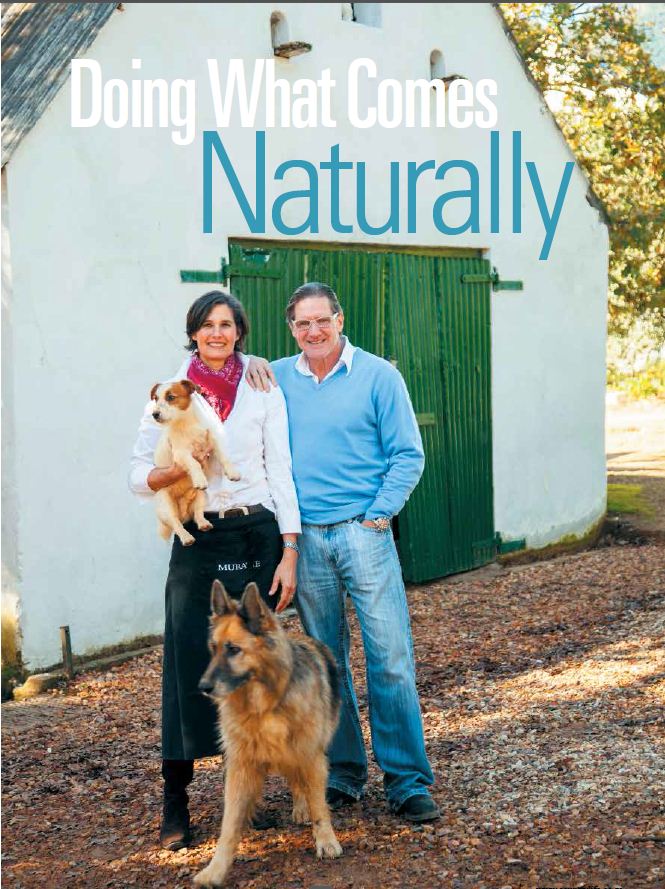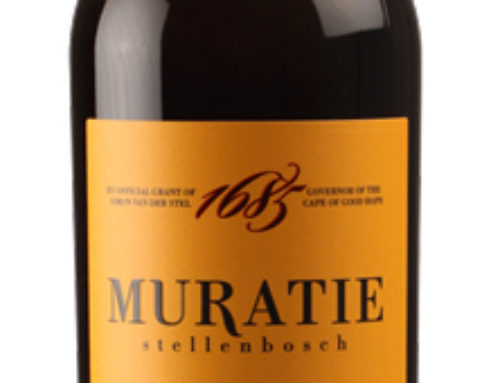Muratie Farm Kitchen recently had the wonderful opportunity to feature in the one of the top traveling magazines in the country, if not the world, Country Life. See what they had to say about our little piece of heaven…….
It’s fitting that the oldest, privately owned wine farm in the country has such a rich history. Decidedly unstyled and unstructured, the layered collection of buildings on Muratie wine farm, and the giant oaks and bits added on by various owners, are evidence of the importance that present owners Rijk and Kim Melck place on preserving a heritage that goes back 400 years. And how splendid they find such vintage, weathered wear.
In this valley, where the decomposing granite runs deep and the summer dews revive and refresh the vines in the heat, fine wines have ensured the estate remains renowned both locally and internationally. But of far greater importance for Rijk, who gave up his career as a GP to run this family farm, is to remain custodian of Muratie, and hold it and its history intact for future generations. And he loves to tell the romantic story of the farm’s origins.
Some 40km from Cape Town, the farm was first granted to Laurens Campher, a Germansoldier working for the Dutch East India Company in 1685. He had fallen in love with a slave girl, Ansela, and would walk all the way to see her where she was held at the Slave Lodge in Cape Town, a journey of about three days. He did this regularly for 14 years before finally Ansela and the three children that she bore Campher were emancipated and allowed to live at the farm. Today their first house and an old oak tree planted at that time are still there. But this is not the only extraordinary part of the farm’s history.
George Canitz, a painter from Germany, and his daughter, Alberta Annemarie, became lost and stumbled across this farm in the valley beneath the Hottentots-Holland mountains. Captivated by its position and secluded setting, Canitz bought it in 1927 and became the first to
cultivate South African pinot noir grapes.
In the 18th century, Muratie had been a division of a much larger farm called De Driesprong that belonged
to wealthy Cape merchant, Martin Melck. Two hundred years later, one of his descendants, a Stellenbosch university student named Ronnie Melck, arrived at Muratie to buy wine for a party at his university hostel and was as entranced by the property as were others before him.
He came to know the owner, Annemarie, the last surviving daughter of Canitz, who inherited her father’s estate in 1958. She had no heirs and sold the farm to Melck in the 1980s. Melck died before the essential restoration of the Muratie vineyards could begin, but his son Rijk has continued this work, and has travelled the world promoting its wines. Since 2005, Francois Conradie has been in charge of the cellar.
Rijk’s passion for the history has seen him select historical names, and names of those vital to the farm’s development, for Muratie wines. A red Cuvée is named Ansela van der Caab, a white Cuvée Laurens Campher. George Paul Canitz, of course, is the name of a Pinot Noir, and a Merlot is named after Canitz’s daughter Alberta Annemarie. A Shiraz is named after Ronnie Melck, and a Chardonnay after his granddaughter Isabella, the daughter of Rijk.
In keeping with the honest simplicity of Muratie is the Farm Kitchen, the restaurant where his wife Kim, a leggy brunette and ex model, cooks with uncomplicated style. “Coarse salt, white pepper and lemon juice are my three favourite ingredients,” she says. “Taste this, there is nothing in this mutton soup but the meat, some grated carrots, two celery sticks, onions and a half-cup each of lentils and sugar beans, boiled slowly



